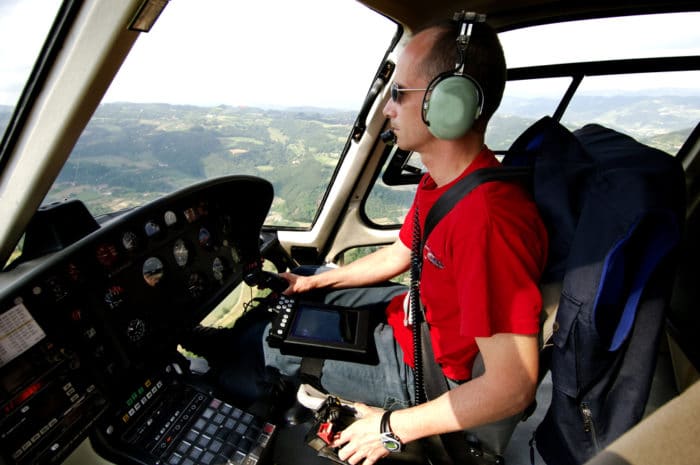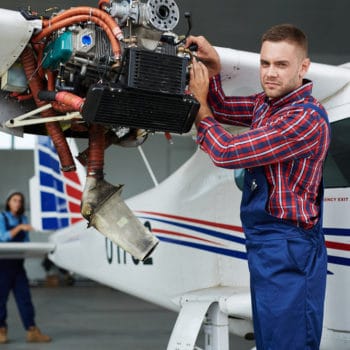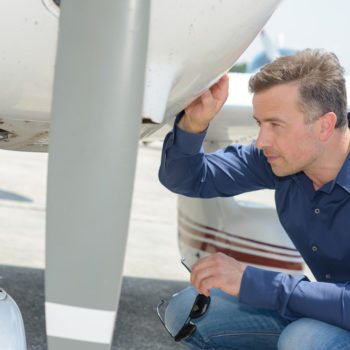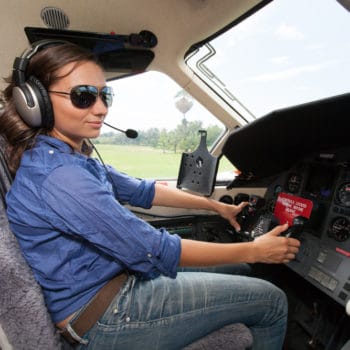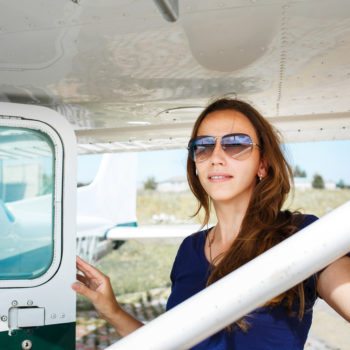Why We Love It
-
$84,510Potential Avg. Salary
-
10.3%Job Growth Rate
-
Growing DemandJob Outlook
-
Get to TravelCareer Attribute
Helicopter pilots fly helicopters for a number of reasons: they may transport passengers, collect aerial photographs, conduct searches from the sky, transport patients to emergency medical facilities, or assist with emergency evacuations. Helicopter pilots navigate the skies to fulfill these tasks.
Recommended Schools
What is a Helicopter Pilot?
The following job responsibilities are common for individuals in helicopter pilot roles:
- Operate helicopters and navigate the skies to perform a variety of tasks
- Inspect helicopters before flights to ensure no mechanical issues exist
- Create flight and navigation plans that consider potential obstacles, landing points, gas consumption, and weather conditions
A Day in the Life
Helicopter pilots operate helicopters to perform a variety of tasks. Some helicopter pilots work in the transportation industry and carry passengers and cargo quickly from one destination to another. These pilots may work in the military, or they may work for emergency services, transporting critically injured or ill patients to emergency care facilities. Because helicopters can traverse spaces quickly, they are commonly used to assist in situations that require expedient transportation, or for transport to places with no functional road system.
Other helicopter pilots assist businesses and entities by offering a bird’s eye view of the ground. These pilots may take aerial photographs, they may monitor roadways for local news stations to report on traffic conditions, or they may work with law enforcement to find or follow criminals. Because helicopters can fly lower than planes, and because they aren’t inhibited by obstacles like traffic, they can effectively view large expanses of land and follow vehicles without impediment.
While the primary responsibility of the helicopter pilot is to operate and fly helicopters, they also have a variety of other responsibilities for ensuring safe flights. They must inspect helicopters before flights to ensure no mechanical issues exist that would cause unsafe flying conditions. They must also create flight plans before flights that take into account takeoff and landing positions, obstacles—both manmade and natural—that could impede progress, amount of gas required for flights, and weather conditions.
Typical Work Schedule
There is no typical work schedule for helicopter pilots. Helicopter pilots may work part- or full-time, and their working schedule depends highly on their employers. For example, helicopter pilots who work for news stations may commonly work normal business hours to collect traffic information during rush-hour in mornings and evenings on weekdays. On the other hand, those that work for hospitals or law enforcement may need to be available any day of the week, any time of the day to handle emergencies.
Typical Employers
Typical employers for helicopter pilots include the military, local news stations, emergency services organizations (fire and rescue), hospitals, and law enforcement agencies.
Recommended Schools
How To Become a Helicopter Pilot
It is not absolutely necessary to have a bachelor’s degree to become a helicopter pilot. Many helicopter pilots have only a high school diploma, but all helicopter pilots who fly for profit must earn a commercial pilot’s license for helicopters from an FAA-approved institution. Before they can qualify for a commercial license, they must first become certified as private helicopter pilots and earn a private helicopter rating. After becoming licensed to fly helicopters for personal use, they can pursue a commercial license.
The requirements for earning a commercial helicopter pilot’s license include more than 100 hours of flight time that meets specific requirements. For example, a required percentage of that time must be in solo flight, another percentage in cross-country flight. To become certified as a commercial helicopter pilot, aspiring pilots must fulfill all training requirements and pass both written and practical tests. Without an FAA-approved commercial helicopter license, pilots are unable to fly for profit.
However, many businesses will require that helicopter pilots also have a bachelor’s degree. The type of bachelor’s degree pursued may not be important, but it’s helpful if the degree is related to the field you hope to work in. For example, a helicopter pilot who wants to work in emergency services may pursue a healthcare major, while those who want to work in law enforcement may choose to major in a field like criminal studies. Others pursue degrees from aviation schools that allow for the earning of a degree and a commercial helicopter’s license concurrently.
Helicopter Pilot Salary Data
We’ve provided you the following to learn more about this career. The salary and growth data on this page comes from recently published Bureau of Labor Statistics data while the recommendations and editorial content are based on our research.
National Anual Salary
Low Range
$53,330Average
$84,510High Range
$147,890National Hourly Wage
Low Range
---Average
---High Range
---How do Helicopter Pilot salaries stack up to other jobs across the country? Based on the latest jobs data nationwide, Helicopter Pilot's can make an average annual salary of $84,510, or --- per hour. On the lower end, they can make $53,330 or --- per hour, perhaps when just starting out or based on the state you live in.
Salary Rankings And Facts
#119 Nationally for All Careers
Above Average Salary Nationally
Highest Education Among Helicopter Pilots
- 2.3% Doctorate
- 11.2% Masters
- 60.8% Bachelors
- 6.8% Associates
- 13.7% College
- 4.8% High School
- 0.5% Less than High School
Job Growth Projections and Forecast
2014 Total Jobs
43,5002024 Est. Jobs
48,000Job Growth Rate
10.3%Est. New Jobs
4,500How does Helicopter Pilot job growth stack up to other jobs across the country? By 2024, there will be a change of 4,500 jobs for a total of 48,000 people employed in the career nationwide. This is a 10.3% change in growth over the next ten years, giving the career a growth rate nationwide of Above Average.
Growth Rankings And Facts
#179 Nationally for All Careers
Above Avg. Growth Nationally
What Companies Employ The Most Helicopter Pilots
| Industry | Current Jobs | New Jobs Needed | % Increase |
|---|---|---|---|
| Nonscheduled air transportation | 13,900 | 2,000 | 2% |
| Technical and trade schools; private | 4,700 | --- | --- |
| Support activities for air transportation | 3,200 | 200 | 0% |
